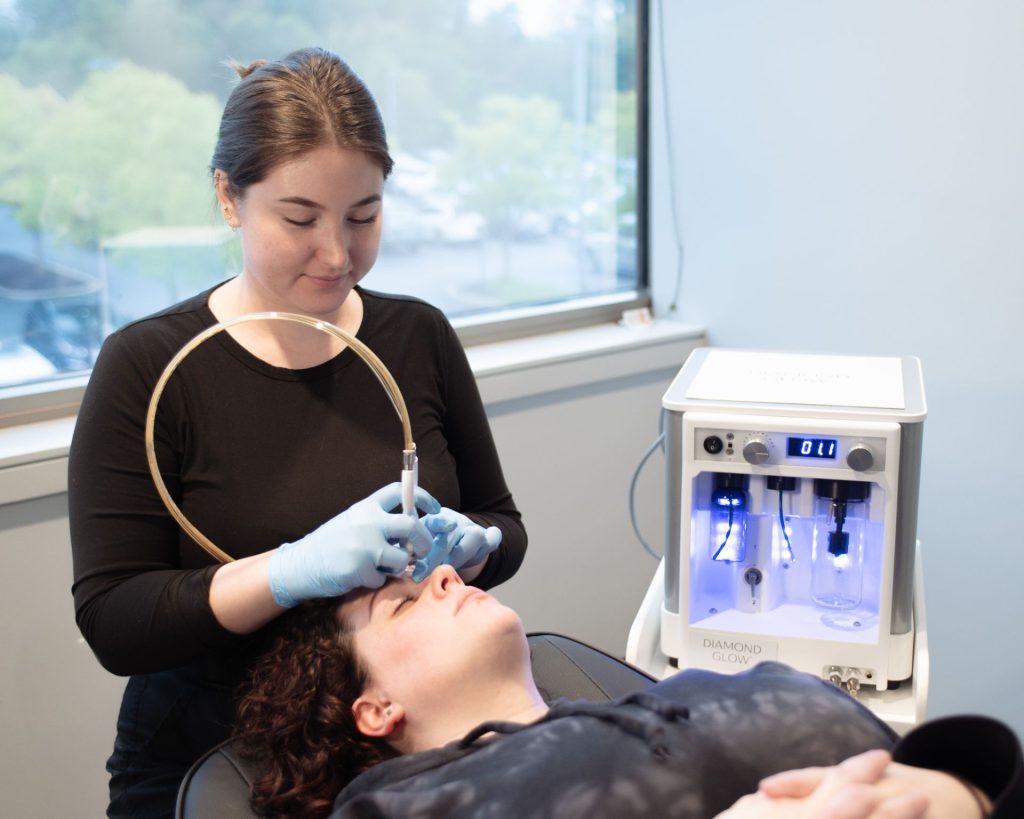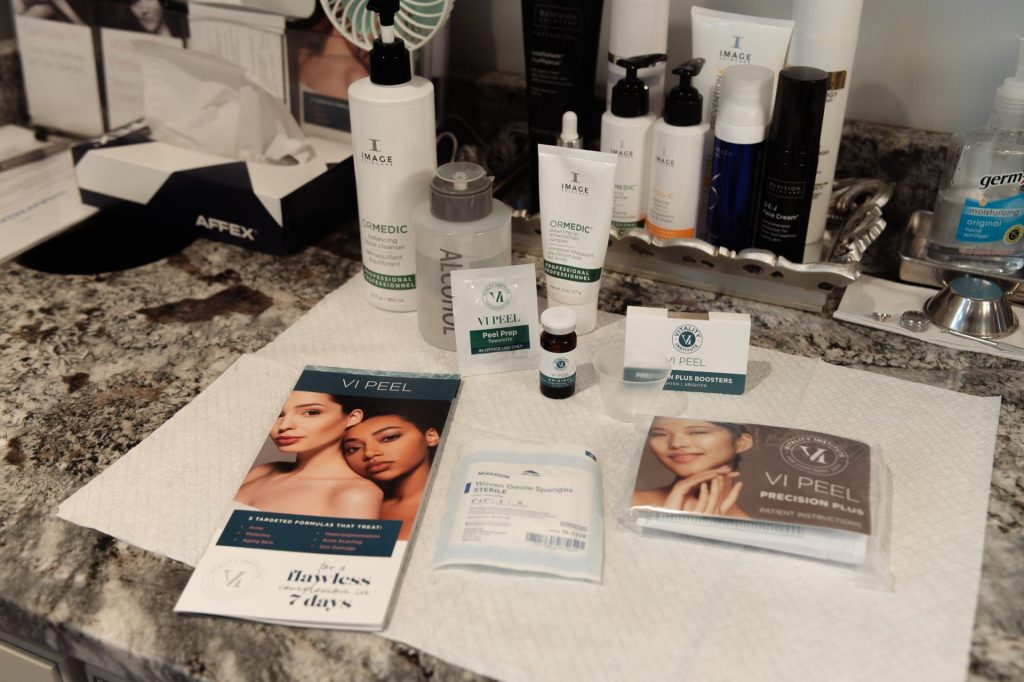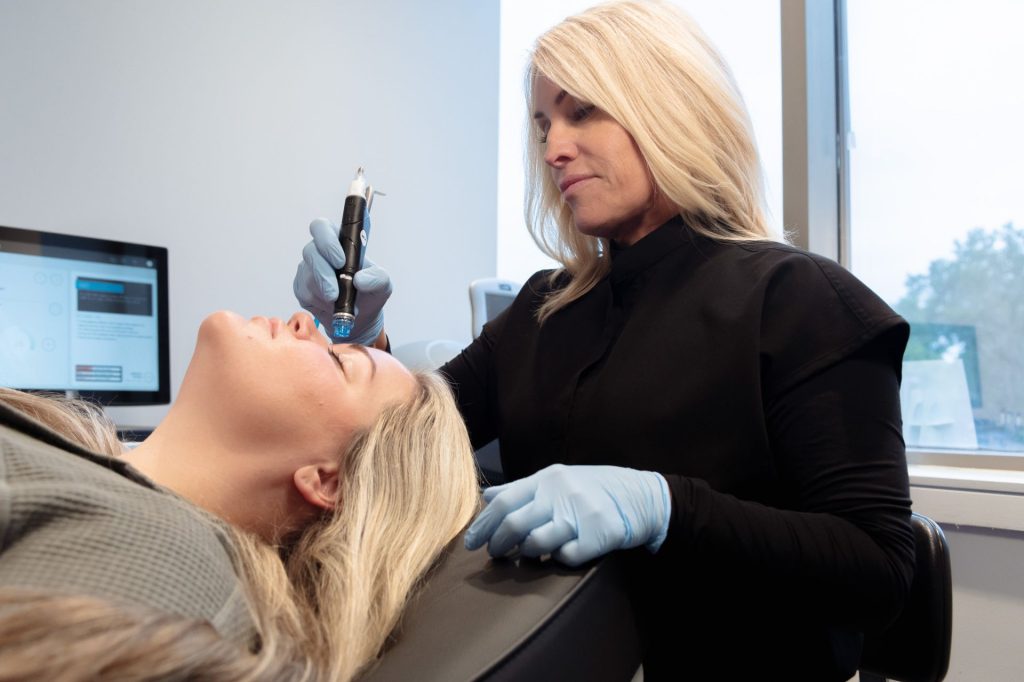Dermaplaning is an effective, safe, non-invasive exfoliation procedure that uses a sterile, surgical scalpel to gently “shave” the skin’s surface, removing the top layer of dead skin along with fine, vellus hair (aka peach fuzz). The procedure can remove between two to three weeks of dead skin from the face.
*must wait 14 days post any injections for facial treatments*
Before: Avoid retinol 5 days prior. Cannot receive treatment with active cold sores or a sunburn.
During: You will experience a mild exfoliation sensation.
After: You will leave with beautiful, smooth, glowing skin!
Frequently Asked Questions
-
A common question we receive often is: Will my hair grow back darker and thicker? The answer is: No! When vellus hair is removed, it is physiologically impossible for it to grow back thicker. It usually takes about four weeks for the soft, fine vellus hair to slowly grow back. Dermaplaning is also not a great option for those with significant acne.
-
No, the skin instantly has a healthier glow and feels much softer. Additionally, makeup glides on effortlessly for a flawless finish. If you are attending an important social event, dermaplaning procedures are highly recommended. You may experience a mild flushing, but this will quickly dissipate.
-
Dermaplaning may be performed every 4 weeks to maintain results.






